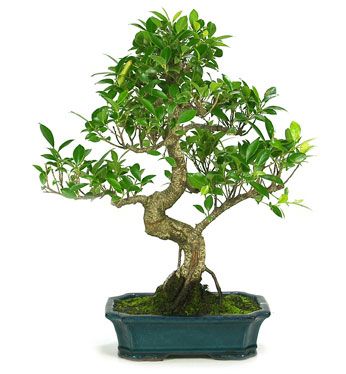Characteristics
It is a tropical evergreen leaf tree. Appreciated for its high resistance and the growth of air-roots giving great character.
Location
Ideally in a Mediterranean climate outdoors during the summer months and protected from cold temperatures during winter.
In colder climates keep in a greenhouse throughout the year.
Watering
Generously in summer and decreasing in winter.
Fertilization
From spring to autumn.
Re-potting
Every 2 years in spring-summer.
Substrate
100% Akadama or mixed with 20% of volcanic clay.
Pruning and pinching
Pruning
The pruning is realised in spring.
Pinching
Using tweezers, prune back to 2 leaves after 4 to 6 leaves have grown. Ficus will bleed milky latex profusely. When the latex dries, it forms its own natural seal and it is not necessary to use any other cut paste as a sealant.
Wiring
Can be carried out throughout the year.
Curiosities
Growth of air-roots is a characteristic of many ficus species. The air-roots act as a strong support and aid the branches to grow extensively over great areas. Ficus Retusa are capable of growing epiphytically on other trees. With the help of birds or other animals that have eaten their fruits (figs), the seeds are laid on a tree top, making it the host tree. Roots start descending through the trunk of the host tree until they reach the ground and start strangling the host tree trunk.

